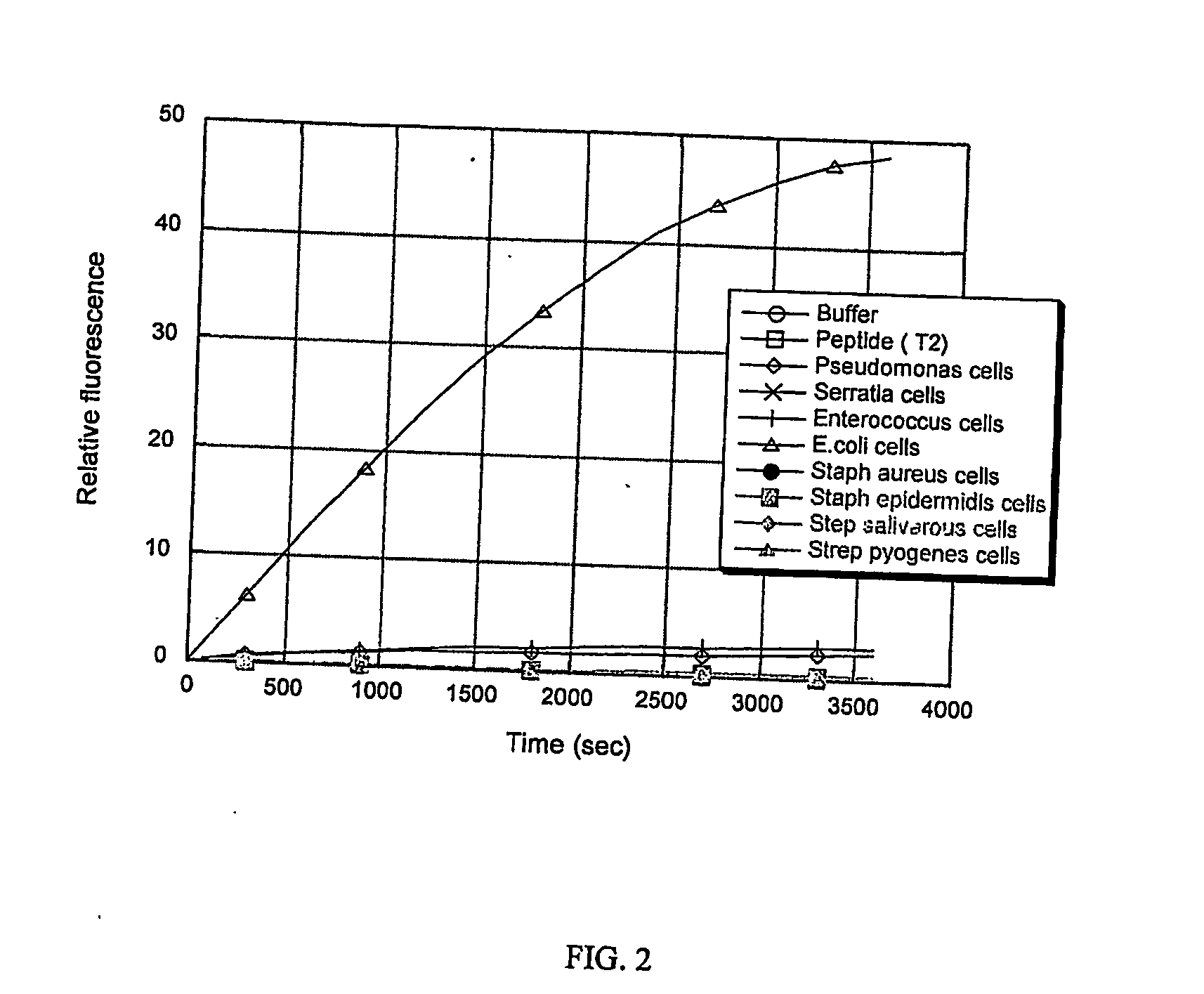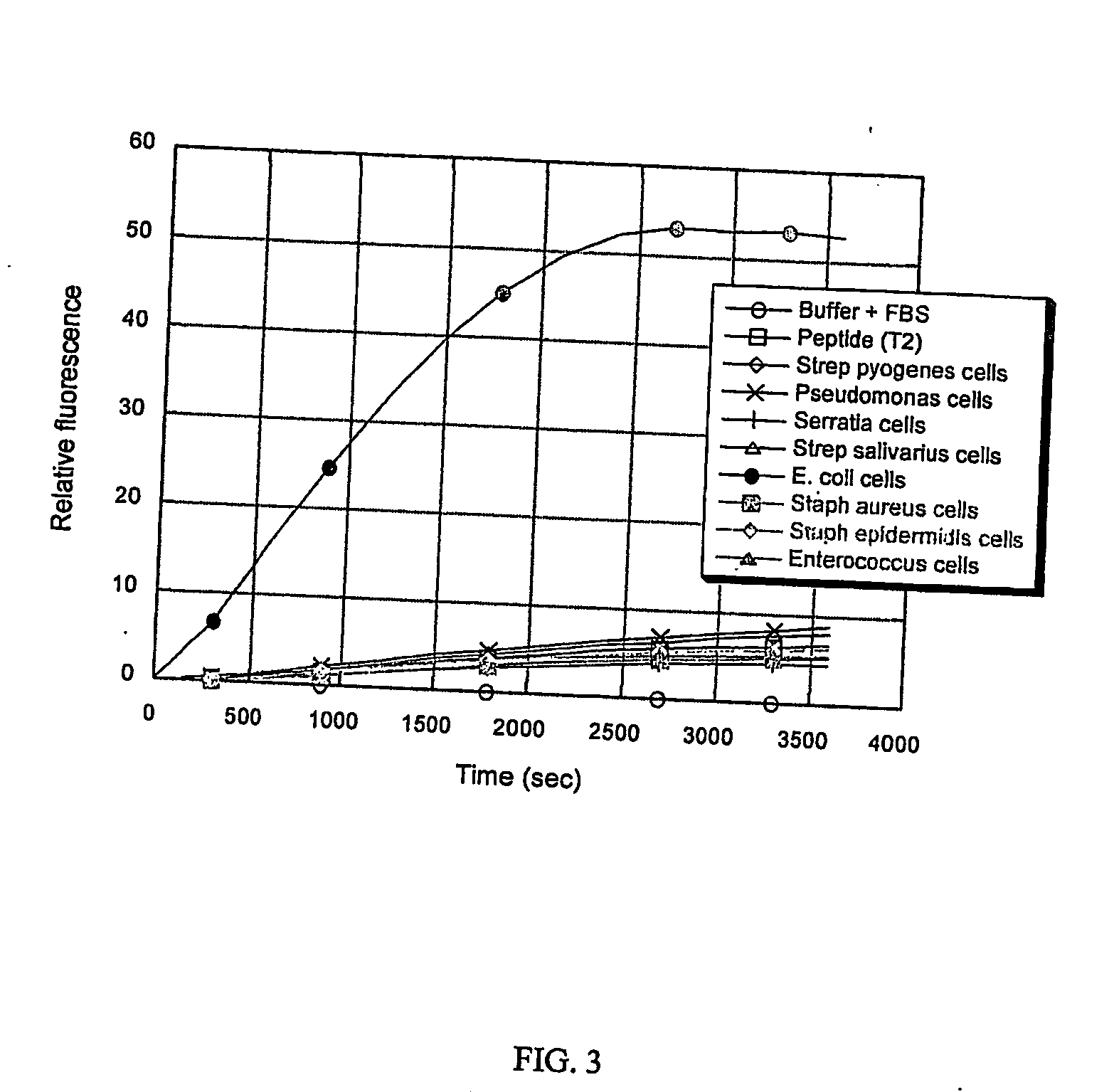Method for detecting escherichia coli
a technology of escherichia coli and detection method, which is applied in the field of detection method of escherichia coli, can solve the problems of unintended effect of breeding resistant strains of bacteria, source of healthcare expenditure, severe, even life-threatening disorders,
- Summary
- Abstract
- Description
- Claims
- Application Information
AI Technical Summary
Benefits of technology
Problems solved by technology
Method used
Image
Examples
example 1
Detection of the Presence of E. coli in a Sample
E. coli Assay Development
[0063] The Gram-negative bacterium Escherichia coli is the best characterized human pathogen and is known to secrete very few molecules unless specifically required for virulence. The virulent strains include those likely to cause food poisoning (O157:H7), intestinal disorders (EHECs) or urinary tract infections (UTIs). However, most strains of E. coli can harmlessly coexist with humans and are not likely to cause disease under normal circumstances.
[0064] Although many of the genes are common to other bacteria, E. coli has developed some unique means of coexistence. A search of the E coli K-12 genome by subtraction of several other pathogenic and non-pathogenic bacteria provides a list of genes that are unique to this organism. The listing obtained includes the outer membrane proteins phospholipase A, outer membrane protein T (ompT) and several other omp genes.
example 2
Development of Biosensor Surfaces
[0074] The attachment of molecules to surfaces can be performed by the use of several different types of interactions. Typically, proteins can be attached to surfaces using hydrophobic, electrostatic, or covalent interactions. There are many commercially available membranes and resins with a variety of surface properties. Surfaces can also be chemically modified to provide the required surface properties.
[0075] Commercially available transfer membranes exist for protein and peptide binding. They consist of positively and negatively charged polymers such as ion exchange membrane disc filters and resins. Nitrocellulose membranes offer hydrophobic and electrostatic interactions. Glass fiber membranes offer a hydrophobic surface that can easily be chemically modified to add functional groups. There are also modified polymer membranes that offer reactive functional groups that covalently bind proteins and peptides.
[0076] It is also possible to utilize ...
PUM
| Property | Measurement | Unit |
|---|---|---|
| pH | aaaaa | aaaaa |
| with wavelength | aaaaa | aaaaa |
| with wavelength | aaaaa | aaaaa |
Abstract
Description
Claims
Application Information
 Login to View More
Login to View More - R&D
- Intellectual Property
- Life Sciences
- Materials
- Tech Scout
- Unparalleled Data Quality
- Higher Quality Content
- 60% Fewer Hallucinations
Browse by: Latest US Patents, China's latest patents, Technical Efficacy Thesaurus, Application Domain, Technology Topic, Popular Technical Reports.
© 2025 PatSnap. All rights reserved.Legal|Privacy policy|Modern Slavery Act Transparency Statement|Sitemap|About US| Contact US: help@patsnap.com



